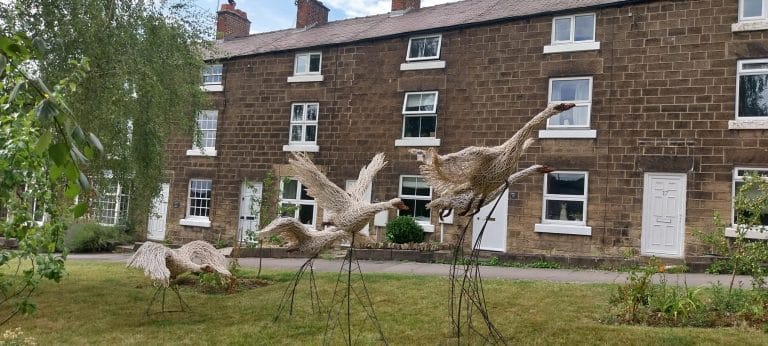First ever Arts in Hospitals toolkit mentions Derby Hospitals as exemplars
A brand-new toolkit, which provides an evidence-based framework for embedding high-quality arts interventions in hospitals, has been published with a case study showcasing work taking place in Derby Hospitals.
Launched by the National Arts in Hospitals Network (NAHN), the toolkit offers a complete suite of resources covering six essential areas: governance, strategy, evaluation, collection management, art and environment, and participatory arts.
Developed by creative health consultant Jane Willis in collaboration with NAHN members, with accessible visual design by Jennie Ives and funding from Arts Council England.
Laura Waters, Head of Arts with Air Arts, which is part of Derby & Burton Hospitals Charity, and a Director of the National Arts in Hospitals Network, said: “We are very proud that our work here in Derby has been recognised within this guidance. It represents a watershed moment for hospital arts in the UK and, for the first time, hospital arts managers and NHS leaders have access to comprehensive, evidence-based tools that demonstrate how creative interventions can be strategically embedded within healthcare delivery.”
Air Arts is part of, and funded by, Derby and Burton Hospitals Charity, serving patients and staff across 12 hospitals sites at the University Hospitals of Derby and Burton NHS Foundation Trust. The arts programme which also receives additional project funding from Arts Council England, The National Lottery, and other trusts and foundations. was established in 2007 as a predominantly visual arts programme to support wayfinding at the new Royal Derby Hospital, with a heritage strand to support staff moving across from the infirmary site. As the programme grew, other strands were added, notably music and patient engagement. In 2019, the programme secured National Lottery Heritage funding to develop a medical museum to catalogue, conserve and interpret its 1,000-piece archive from the old hospital site.
Jane Willis, lead author of the report said: “By bringing together best practice from across the sector, we’ve created a resource that will foster confidence and reinforce the professionalism of this vital work while inspiring NHS trusts new to hospital arts to set up programmes founded on good practice.”
David Probert, UCLH Chief Executive, said: “The arts in hospital are an essential component of patient care; they are not just an afterthought. This guidance provides the framework we need to ensure arts programmes are professionally managed, strategically aligned, and delivering maximum impact. We are fortunate at UCLH to have a strong charity which raises funds to enable this essential work.”







